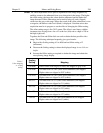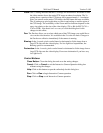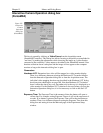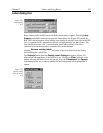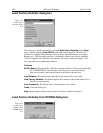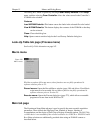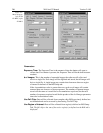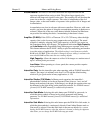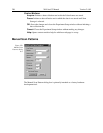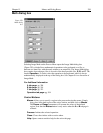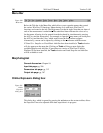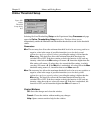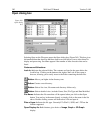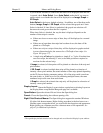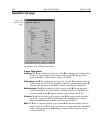
Chapter 15 Menus and Dialog Boxes 297
Accumulations:
WinView/32 can collect more than one exposure and sum the
exposures together before saving to disk. This allows larger signals to be
achieved with improved signal-to-noise ratio. The resulting file will be about the
same size as that for a single exposure. This value is independent of the # of
Images value, so the total number of exposures is the product of # of Images and
Accumulations.
Accumulations are done in software with most controllers. However, with some
models, you have the option of doing the accumulation summing in hardware or
software. Where this is the case, radio buttons labeled Software and Hardware
are provided for making the choice. Accumulating in hardware is faster.
Amplifier (PI-MAX):
If the CCD is a Thomson 512 × 512 CCD array, either the high-
capacity (fast) or the low-noise array output node can be selected. The actual
selection is made by selecting FAST (high capacity) or SLOW (low noise) on
the Experiment Setup A/D tab page. The parameter indications
High Capacity
and
Low Noise
on the Experiment Setup Main page are reported values only.
This feature enhances the PI-MAX’s ability to provide outstanding performance
in a wide variety of applications. The default setting is read from non-volatile
RAM in the PI-MAX. If the selection is changed, the new setting is written to the
non-volatile RAM and becomes the new starting default.
High Capacity:
Allows the camera to collect 16 bit images at a readout rate of
up to 1 million pixels per second.
Low Noise:
When operating at a lower speed, the camera provides superior
noise performance.
Intensifier Gain:
Sets the intensifier gain when operating with an PI-MAX intensified
camera. The range is in arbitrary units from 1 to 256 and the default setting,
which will give good results in many applications, is 128.
Intensifier Shutter (CW) Mode:
In Shutter mode operation, the intensifier’s
photocathode is biased on for the set Exposure Time (down to 1 ms), and off
during each readout of the array. If the image is too bright, the exposure time can
be shortened or the light falling on the intensifier reduced. See PI-MAX manual
(formerly ICCD-MAX manual) for additional information.
Intensifier Gate Mode:
Selecting this radio button puts PI-MAX in gate mode, in
which the photo-cathode is biased on by pulses generated in the timing
generator. See PI-MAX manual (formerly ICCD-MAX manual) for additional
information.
Intensifier Safe Mode:
Selecting this radio button puts the PI-MAX in Safe mode, in
which the photocathode is continuously biased off until either Shutter mode or
Gate mode is selected. Note that Safe mode is the turn-on default. In a system
having the PI-MAX camera, when the software is booted, a dialog box appears
that allows you to change the PI-MAX start-up gate mode.



